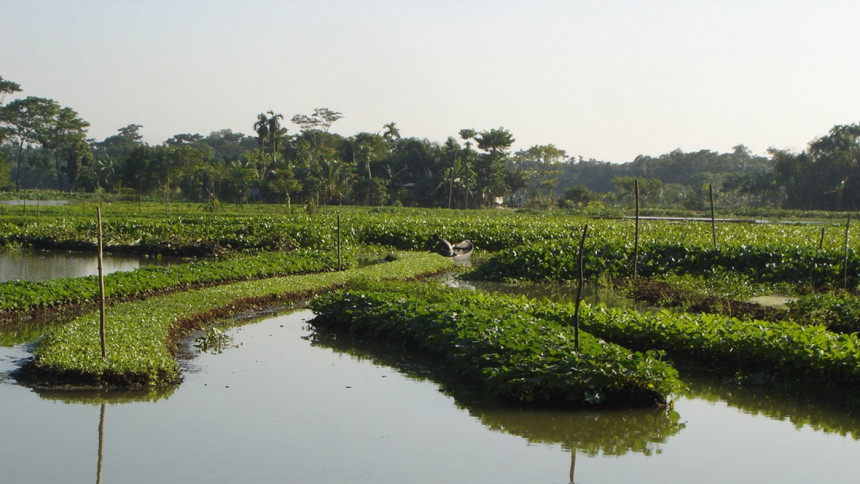Disclaimer:
Please be aware that the content herein is comprised of personal reflections, observations, and insights from our contributors. It is not necessarily exhaustive or authoritative, but rather reflects individual perspectives. While we aim for accuracy, we cannot guarantee the completeness or up-to-date nature of the content.
In south-central Bangladesh, for 300-400 years, people have been following an age-old traditional method of cultivation called dhap, or known locally as baira. These are floating vegetable gardens – artificial islands, that simply rise and fall with the swelling waters. Now farmers are reviving this old practice to reduce their vulnerability due to climate change. Floating gardens are most common in the districts of Gopalganj, Barisal and Pirojpur. Here, during monsoons the farmers gather weeds like water hyacinth or paddy stalks, and place them on stagnant water, beating them into shape and making rafts. They plant seedlings on these organic beds, and place them in flooded parts of the villages. Farmers stack several compact layers of aquatic weeds like water hyacinth, duckweed or paddy stubs – the stubble of what remains after the rice grain has been harvested. They are helped usually by their families and neighbours. The weeds are allowed to rot, and then mixed usually with cow dung and silt. Crop seeds are placed in small balls called tema that are made out of peat soil, and wrapped in coconut fibre. After a week, when seedlings are about 15cm high, they are transplanted to the floating garden beds. Traditionally, seeds of leafy vegetables, like red amaranth, are sown directly on the floating beds. They are then anchored with bamboo poles, so that they don’t drift away. Both men and women work to make these organic floating beds, which last for around five to six months. Farmers grow vegetables like okra, bitter gourd, snake gourd, spinach and brinjal on these beds, and sometimes spices like turmeric and ginger. Besides vegetables, rice seedlings can sometimes be grown. During the monsoon, farmers use small boats to navigate between these small islands. A typical floating bed is about 20ft (6m) long, but they can be as long as 180ft (55m) and provides enough food for the farmer and their family, and a source of income when the surplus is sold. People are experimenting with the materials used to create the floating gardens – sometimes they use rice and wheat stalks, occasionally adding a system of inner tubes made from car tires and a bamboo framework for additional support. The average cost of a floating bed is around 8,000 Bangladeshi taka ($94/£73), making food production possible throughout the year and providing food security even during the monsoons. According to a FAO report, the farmers earn an average profit of $140 per 100 square metres (£107/1,070 sq ft) of floating bed during the monsoon season. According to an FAO report, the production yields are reliable in the floating gardens, such that this system can be the best food production for 60-90% people in the wetlands of southern Bangladesh.

 Consent to share form or official link.
Consent to share form or official link.

 2Zero hunger
2Zero hunger 13Climate action
13Climate action
Comments
Log in to add a comment or reply.